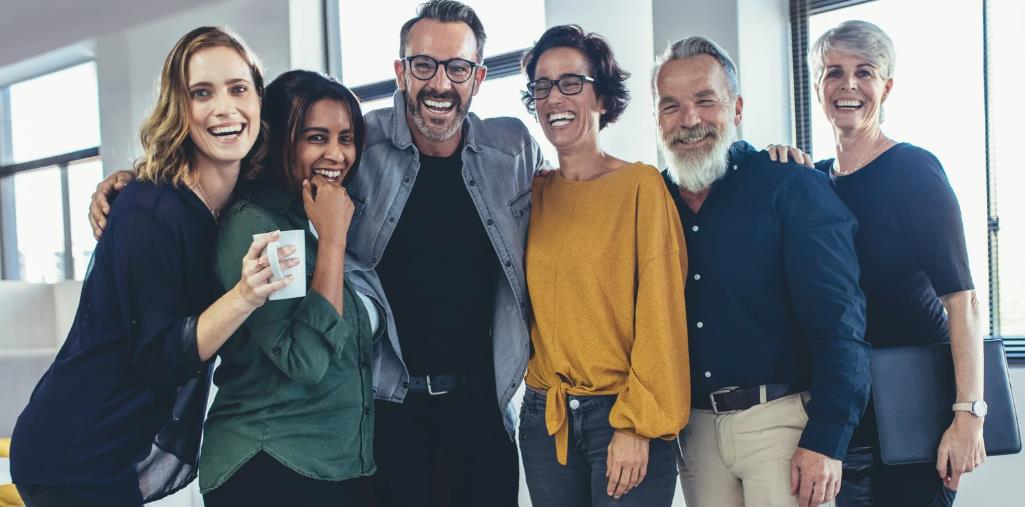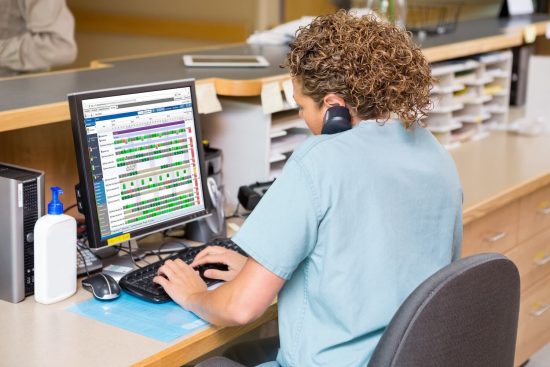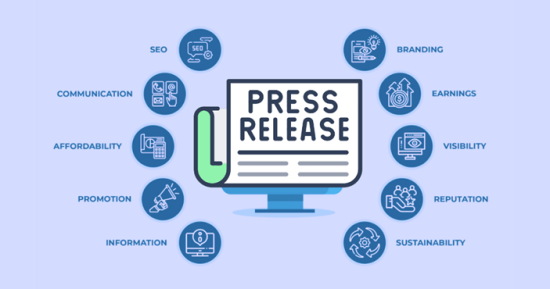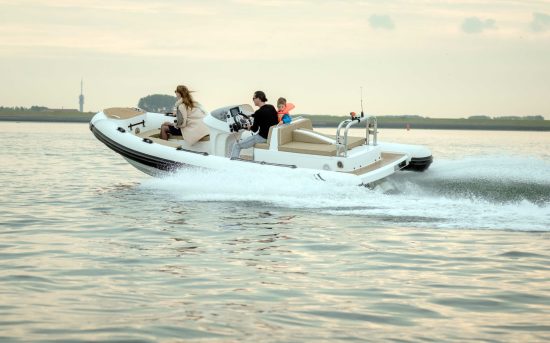
Did you know that nearly half of the U.S. workforce is unclear about ‘business casual’? If that resonates with you, you’re in good company. It might feel like trying to crack a secret code. Work settings are always changing, making the definition of what is business casual for men elusive. Men’s business casual attire is versatile, fitting into the formal world of finance and the laid-back tech scenes. This guide to men’s business casual aims to make it clear, what is business casual for men. It gives you the confidence to understand and dress well for the professional world.
Starting a new job or refining your look? Knowing the right balance is key in the world of business casual. It’s about the small details, like when to wear a button-down without a tie or opting for chinos and a blazer. This guide will help you achieve a versatile men’s business casual attire. It’s not just about meeting the dress code, but also showing off your personal style.
Key Takeaways
- Business casual is about flexibility across different workspaces.
- Your industry’s unique style dictates your dress code choices.
- Business casual fuses professionalism with comfort.
- Your outfit should mirror your professionality and personal touch.
- Dressing well in business casual can boost your work confidence and success.
Decoding Business Casual: A Modern Men’s Dilemma
The concept of business casual attire has significantly evolved, empowering men in the workplace and altering our perception of dress codes. Initially introduced through Casual Fridays to boost employee morale, the idea has expanded, especially under the tech industry’s influence. Today, understanding the nuances of business casual for men is not just essential, but also a source of empowerment as it affects comfort and professionalism in the modern workplace.
Historical Evolution from Casual Fridays to Tech Trendsets
In the 1960s, Casual Fridays provided employees a much-needed respite from the rigid, formal dress codes typically required during the workweek. By the 1990s, the tech boom in Silicon Valley embraced a more relaxed attire approach, which quickly spread as the standard across various industries. The shift wasn’t confined to Fridays; it influenced everyday office fashion, blending comfort with a professional aesthetic in innovative ways. This trend allowed more personal expression through work attire, reflecting individual styles while maintaining a professional look.
Tech giants like Google and Facebook further popularized this style, making sneakers and jeans acceptable in the workplace. The evolution of business casual has also been influenced by broader social changes towards more casual living, impacting even traditional industries. Today, business casual can vary significantly across different companies and regions, creating a sense of inclusivity and belonging in a more globalized and diverse professional environment.
The Shift in Work Environment and Its Impact on Attire
Even finance, known for strict rules, has adopted a more casual dress code. This change mirrors a broader move in society towards more relaxed styles. It shows how work culture and fashion trends are connected.
| Decade | Business Casual Trends | Key Influencers |
|---|---|---|
| 1960s | Introduction of Casual Fridays | Post-war corporate America |
| 1980s-1990s | Expansion of casual wear into daily office attire | Silicon Valley and tech startups |
| 2000s-Present | Increased acceptance of casual styles, even in traditional industries | Globalization and cultural shifts |
Understanding the Spectrum of Business Casual for Men
The spectrum of business casual changes based on the industry. Technology fields might find a more relaxed dress common. But in finance or law, the attire could be more formal. Knowing where your job falls in this scale is key to dress right.
Look at the clothes’ design details to understand men’s business casual clothing guidelines. If clothes have many details, they might be seen as casual. But simple designs and colors are usually linked to formality. This insight helps build a wardrobe suited to business casual requirements.
Now, we’ll cover what business casual actually means:
- Detailed and patterned garments: Best for creative jobs or those with less strict rules.
- Plain, neutral-toned clothing: Great for serious fields like law and finance.
Grasping these points will help you pick clothes that match your job and its dress code expectations.
| Industry | Typical Attire | Examples |
|---|---|---|
| Technology | More casual | Jeans, T-shirts, casual shirts |
| Finance | Near-formal to formal | Business suits, dress shirts, formal shoes |
| Law | Formal | Blazers, formal trousers, ties |
| Retail | Moderate to casual | Chinos, polo shirts, casual blazers |
With this understanding of business casual, making your wardrobe work for your job should get easier. Aim to be comfortable but also fitting in. This way, your clothes show respect for your work environment while still letting you show some personal style.
Key Elements of Men’s Business Casual Attire
Starting your journey to the perfect business casual wardrobe means knowing the key pieces that mix flexibility and professionalism. We will focus on essentials like shirts, pants, and shoes. They’re important for creating fashionable outfits that match the business casual look for men.
Shirts: The Foundation of Your Business Casual Look
Shirts are vital for getting the right feel in your outfit. You can choose from classic button-downs to neat dress shirts. Use polo shirts or high-quality t-shirts in a more laid-back setting. The main thing is to make sure the shirt fits well, is top quality, and looks tidy.
Pants: Selecting the Right Trousers for the Occasion
Finding the right pants is key for the business casual style. You can go with tailored slacks, chinos, or even smart jeans if the workplace is casual. They should fit just right, complements your shirt, and give an overall put-together look.
Shoes: The Bedrock of a Polished Appearance
Shoes play a huge role in your outfit. In most business casual settings, you can wear polished leather shoes, elegant loafers, or smart sneakers. Make sure your shoes are clean and well-kept. They greatly add to your overall look.
By combining these wardrobe essentials, you can be ready for many professional situations. Choosing the right colors and materials can adjust the formality of your look. This makes it easy to switch from one event to another without a hitch.
| Item | Description | Occasion |
|---|---|---|
| Button-Down Shirt | Neutral color, no prints | Office Meetings, Daily wear |
| Chinos | Beige or navy blue | Everyday office wear, Casual Fridays |
| Leather Shoes | Dark colors, minimal design | Important meetings, Client presentations |
| Polo Shirt | Solid colors, no logos | Office, Casual outings |
| Jeans | Dark wash, well-fitted | Creative workplaces, Casual days |
Learning to put together these pieces not only makes you look more professional but also prepares you to handle different business environments confidently.
What Is Business Casual for Men in Different Industries?

Industry-specific business casual dress codes change a lot from one field to another. Maybe you’re in a cool tech startup or a serious finance office. How you see business casual makes a big difference in how you come off at work.
In the world of higher education, dressing for work is a bit more relaxed. Professors, for instance, might wear a stylish blazer with a shirt open at the neck. This mixes a bit of comfort with business style, showing what business casual for academia looks like. To figure out what’s right, check the rules and see what others wear.
Tech jobs often let you dress more casually. For business casual in tech, think jeans plus a tidy t-shirt or button-up. It’s about being comfy and showing a bit of your own style, while keeping it professional. Tech spaces believe comfy employees are more successful and inventive.
In finance, things lean a bit more towards the formal. But it’s not all suits and ties. Business casual in finance might be nice slacks and a blazer, or just a sharp shirt with dress pants. This mix of professional and a little laid-back is the norm in this world.
It’s crucial to observe and match the business casual vibe in your field to your workplace’s culture.
Here’s a detailed look at business casual norms across various industries:
| Industry | Typical Attire | Accessibility | Guidelines to Follow |
|---|---|---|---|
| Tech | Jeans, casual shirts | High | Emphasize comfort, personal style |
| Finance | Slacks, smart shirts, optional blazers | Moderate | Maintain professionalism with relaxed elements |
| Academia | Blazers, open-collar shirts | Low | Classical with casual undertones |
Each industry has its own twist on business casual. Still, the main goal remains. It’s about wearing something that’s comfy yet work-appropriate. Following these dress codes shows you understand and respect your work environment. And it helps define your personal image in your field.
Building a Minimalist Business Casual Wardrobe
Making a minimalist business casual wardrobe helps simplify your everyday choices. It keeps you stylish and ready for anything, all year long. We’ll show you how to keep your wardrobe simple yet functional.
Identifying Your Wardrobe Essentials
Start with the basics for a minimal and functional business casual wardrobe. Choose a small number of high-quality shirts, chinos, blazers, and sweaters. Also, pick shoes that fit many looks, for any event. Make sure to pick pieces that are easy to mix, comfy, and long-lasting.
Mixing and Matching for Maximum Versatility
Use neutral colors to widen your outfit options without buying more. Grays, navies, and beiges mix effortlessly, looking sharp yet easy. You can also add a few colorful or patterned pieces to spice up your style.
Seasonal Considerations in Business Casual Attire
Change your wardrobe with the seasons to stay comfy and stylish. Light fabrics and colors are best for spring and summer, while fall and winter need heavier materials and darker tones. This keeps you looking and feeling great all year.
| Season | Essential Items | Material Suggestions |
|---|---|---|
| Spring/Summer | Lightweight blazers, linen shirts, chinos | Linen, light cotton, seersucker |
| Fall/Winter | Wool blazers, sweaters, thermal shirts | Wool, knit, heavier cotton blends |
Keep updating your wardrobe with these tips and for every season. This way, your business casual outfits stay perfect for any work setting or weather.
Accessorizing Your Business Casual Ensemble

Refining your men’s business casual style involves picking the right business casual accessories. These can turn a simple outfit into a sharp and professional look. Go for simple and classical pieces. Professional accessories should not steal the show. They should subtly enhance your look.
Add classic watches, leather belts, and simple cufflinks to your closet. These pieces do more than just look good. They bring sophistication and detail to your style. A sleek watch, for example, is both classy and practical for work settings.
- Watches: Choose timeless designs in metals that match well with other accessories.
- Belts: Opt for a top-notch leather belt in basic colors like black or brown to unify your attire.
- Cufflinks: Plain silver or gold cufflinks up your dress shirt game.
- Pocket Squares: Ideally, pick pocket squares in muted shades. These should complement, not overpower, your look.
In conservative work settings, a well-chosen tie can superbly refine your business casual look. The key is to match it with your shirt and suit. This ensures a professional touch without being too formal.
In summary, the right business casual accessories are vital for nailing men’s business casual style. They bring a fine balance to your attire. Through sophisticated and subtle details, they improve your professional image.
The Importance of Color and Pattern in Business Casual
Exploring the realm of business casual aesthetics means learning about the power of color in business casual and patterns. They are vital beyond style. They show your professional level and the care you put into your work. Choosing the right shades and designs lets you shape your business image, aiming for a serious or casual look.
To look sharp, it’s all about mixing and matching. You can wear a shirt with patterns under a dark, plain blazer. This lets your outfit have a touch of character without losing its serious tone. Or adding bright, playful colors with your accessories can turn a simple outfit into a statement about your style, yet keeping it professional.
Here’s a table to show how choosing certain colors and patterns can change how formal your outfit looks:
| Combination | Perceived Formality | Suitability |
|---|---|---|
| Dark, solid colors with minimal patterns | High | Suitable for conservative industries |
| Light, bright colors with bold patterns | Low | Great for creative fields or casual days |
| Neutral colors with subtle patterns | Medium | Ideal for most business casual settings |
| Bright colors with no patterns | Medium to Low | Suitable for more relaxed business environments |
To wrap it up, smart color and pattern choices can boost your business casual look. They also help build your professional brand. Whether it’s for an important meeting or daily office wear, these details influence how others see you. This opens doors for more creative but still suitable office attire.
Tips for Wearing Business Casual for Men

Mastering business casual means being comfortable yet professional. In today’s changing work environments, finding this balance is key. It shapes how others see you and your daily experience at work.
Utilizing Layers for a Sophisticated Look
Layering is essential for business casual. It helps with office temperature variations and looks stylish. Start with a collared shirt and add a v-neck sweater or a knit blazer. Choose materials that keep you looking sharp all day.
Navigating the Gray Areas: When to Dress Up or Down
Knowing when to dress up or down in business casual can be hard. Dressing up is great for client meetings or presentations. It shows you’re serious and boosts your confidence. For casual days, you can be more relaxed. Being able to change based on the situation is important in business casual settings.
| Scenario | Dress Up | Dress Down |
|---|---|---|
| Client Meetings | Blazer, dress shirt, tailored pants | N/A |
| Regular Workday | Optional tie, polished loafers | Neat polo shirt, chinos |
| Casual Fridays | Smart sweater, casual blazer | Quality denim, clean sneakers |
| Company Events | Business suit, subtle accessories | Layered look with a casual blazer |
Knowing these details makes getting dressed easier. It also helps you stay true to your professional style. Whether layering makes you look good or picking the right outfit, remember every choice is important.
Conclusion
Mixing comfort with class in men’s business casual is key. It’s more than just picking the right clothes. It’s about meeting workplace standards while showing personal style. Learn what each industry expects in business casual. This lets you match your wardrobe to different work environments.
Think of your clothes as tools. A simple, high-quality wardrobe is stylish and practical. Focus on clothes that fit well and look good. The small things, like how your clothes are made and the colors, matter a lot. They show you understand what looks professional.
As you get better at business casual, know that the little things count. Adding the right accessories can make your outfit stand out. This could be something trendy or a classic piece. Start your style journey excited. Pay attention to details. You’ll be ready for any work situation, looking sharp and professional.
FAQ: Mastering Men’s Business Casual
How has the concept of men’s business casual attire evolved over time?
The idea of men’s business casual has changed from ‘Casual Fridays’ in the 1960s. It became less formal in the ’80s and ’90s, inspired by the Silicon Valley. Today, many industries have adapted a more relaxed approach. This change blends professionalism with comfort and personal style.
What does the spectrum of business casual involve?
Business casual varies widely, from almost formal in finance to very laid-back in tech. It’s about knowing your workplace’s expectations and dressing to meet them. You can still be comfortable and express your style in many settings.
What is business casual for men at restaurant?
Business casual for men at a restaurant typically includes a smart combination of a collared shirt (with or without a tie), slacks or chinos, and dress shoes. A blazer or sport coat can be added for a more polished look, especially in upscale dining settings. The key is to appear neat and well-groomed while maintaining comfort and a relaxed, yet professional, aesthetic.
What is business casual for men in 2024?
In 2024, business casual for men typically includes versatile pieces like tailored chinos or slacks, paired with button-down shirts or smart polo shirts. Layering with unstructured blazers or smart sweaters is common, allowing for adaptability to various work environments. Footwear choices favor loafers, derbies, or clean, minimalist sneakers, emphasizing comfort without sacrificing style.






